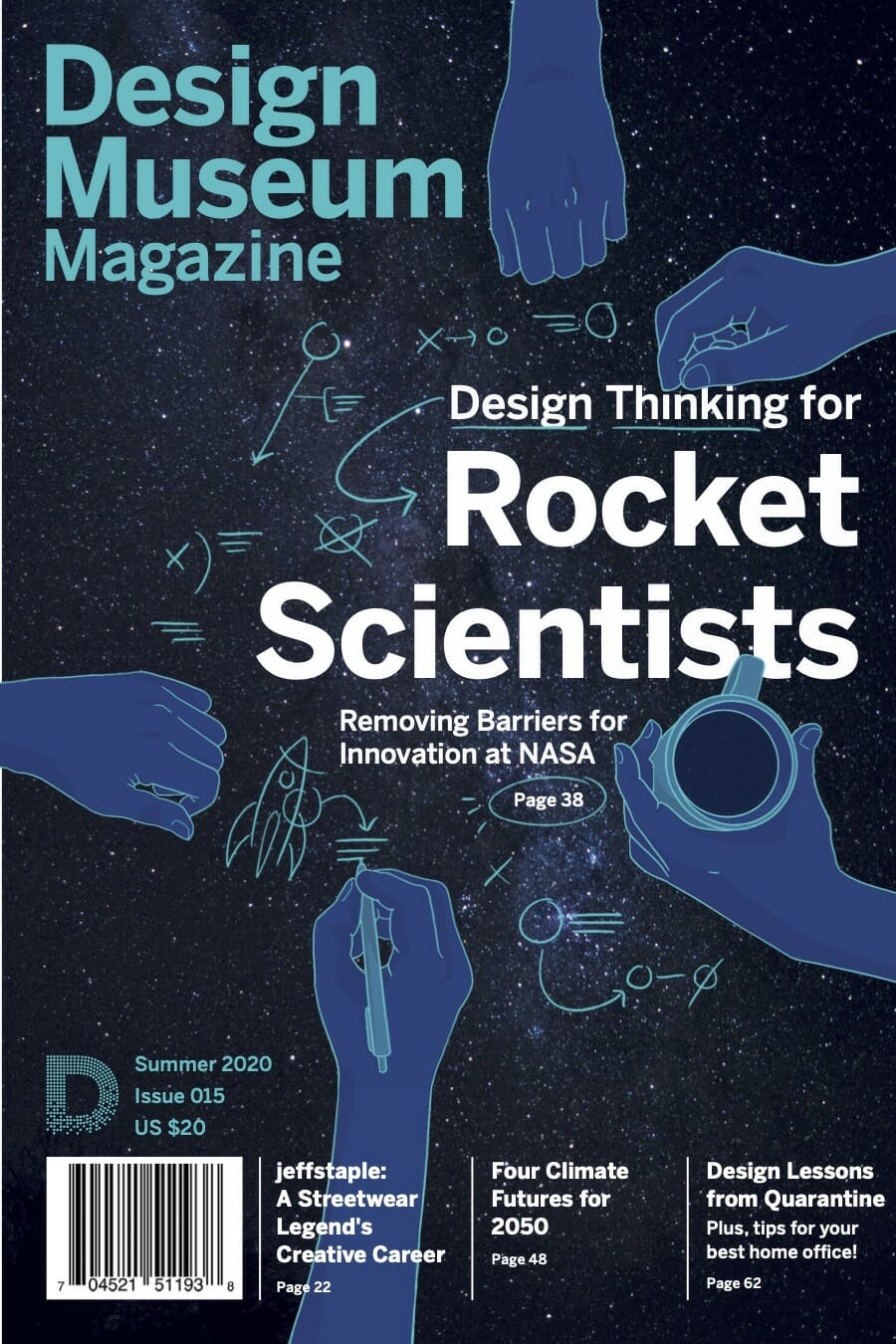Design Thinking for Rocket Scientists
Removing Barriers for Innovation at NASA
In the 1960s, the average age of a NASA employee was 27. As a brand new agency with a once-in-history mission to put a human on the moon and bring them back to Earth safely, the National Aeronautical and Space Administration was moving fast and loaded with young talent. This is where we get the term moon shot, meaning a plan to innovate quickly and achieve something big that was previously thought impossible.
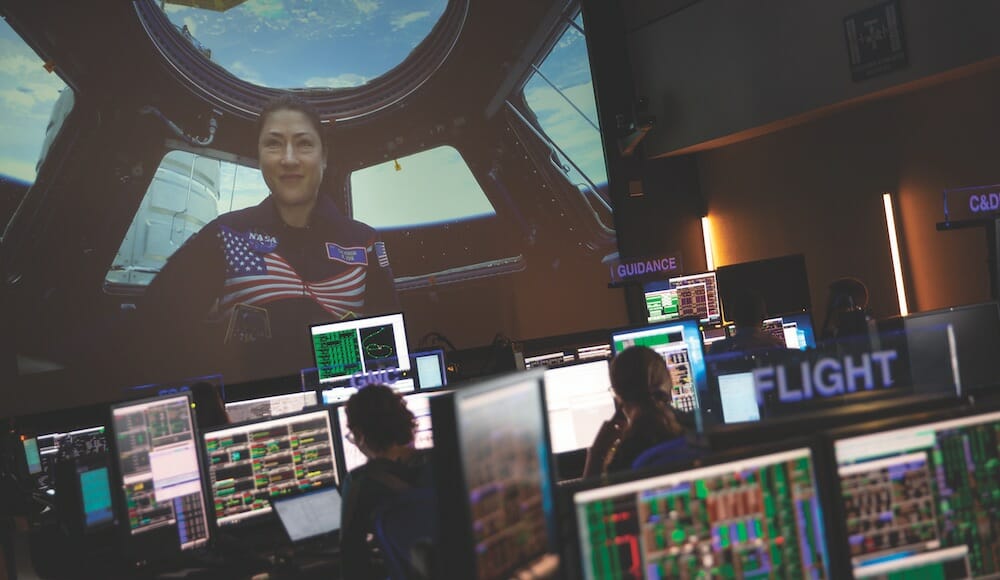
Photo by NASA/Bill Ingalls
By Brian Romer, Director of Design, Thomson Reuters Labs
Over the decades, NASA has grown and launched dozens of other missions beyond the Apollo Moon program, from Voyager to the Space Shuttle, the International Space Station to landing robots on Mars. At over 60 years old, NASA is still known as the pioneer and leader in space exploration, but multiple nimble competitors from the private sector now play a growing role in the field.
Douglas Terrier, NASA’s Chief Technology Officer, stated “We’re at a fork in the road, not because NASA has suddenly started to do some- thing different, but because the world is doing something very different in technology and culture. And we’re really at a decision point about how we’re going to adapt to that.”
The idea was to find these particular people—we called them Persistent Innovators. They’re persistently moving the needle and naturally becoming leaders within the organization. They’re at NASA because they have a vision and they want to make an impact.
Leaders of NASA arranged for an external advisory committee in 2018, composed of innovation leaders in academia and business, who were tasked to organize a workshop, “focused on understanding barriers to innovation at NASA and providing feedback on NASA’s framework for creating an innovative ecosystem.”
Convening Around Innovation
The advisory committee selected the approach of convening a two-day exploratory workshop that brought NASA leaders face-to-face with diverse experts and innovators. I had the good fortune of being invited to run a workshop initiated by Mona Vernon around innovation and culture, alongside Suzi Hamill, Cate Johnson, and Nick Jarema. In late November 2018, about 100 NASA employees, mostly from leadership, assembled in Washington, D.C. for the event.
Our venue was the National Academy of Sciences building in Washington, D.C., with its oversize sculpture of Einstein out front, monochrome exterior, and soaring majestic interior. Every hall and room was lined with amazing photography, art, and sculpture, and the main atrium housed a pendulum that hung several stories from the ceiling. The people at the event were an incredibly smart and collaborative mix of scientists, researchers, engineers, entrepreneurs, and leaders. Interstitial conversation sparkled with talk of solid metal asteroids, a new lunar base, cosmic distances, and, of course, rockets.
The first day was centered around three participatory workshops: one to explore NASA’s best possible future states, called Imagining Success 2030; one to discuss what could go really wrong, Pre-Mortems and Failure Conditions; and one called Leadership Diagnostics, our workshop session to connect NASA leaders with NASA innovators.
Day two harnessed the ideas from the work- shops to determine what steps NASA could take next, both short-term and long-term, to change the organization to better support innovative work.
Unique Environment, Universal Issue
Staying innovative and effective is not a NASA- specific problem. Anyone who has worked on innovation inside an organization that’s been around for a while, especially a larger one, can relate to the challenges that led NASA to create an advisory board seeking solutions.
As organizations grow, so do layers of management and oversight. Common approaches and methods must be documented to preserve knowledge and create a consistent culture. Successes must be maintained and supported into the future, requiring new teams of people and added layers of bureaucracy.
Over time teams become larger, more pro- cess-heavy, and more risk-averse. How can organizations deliberately foster and incubate the capacity to innovate as they mature? Our hypothesis was that certain people in the organization were already doing amazing innovation work despite hurdles in the work environment, and we could learn from them.
The idea was to find these particular people— we called them Persistent Innovators. They’re persistently moving the needle and naturally becoming leaders within the organization. They’re at NASA because they have a vision and they want to make an impact.
Next, we wanted to bring them together with senior leadership, and then structure a work- shop session to coach and prime leaders into listening empathetically to these Persistent Innovators. The interviewers would be tasked with capturing the stories of the innovators, learning what their day-to-day work life is like, and what their greatest achievements and dis- appointments are. Then they’d be asked to dig deeper, find common themes, and map the ideas according to impact and feasibility.

Image by Walt Feimer, courtesy of NASA/Goddard
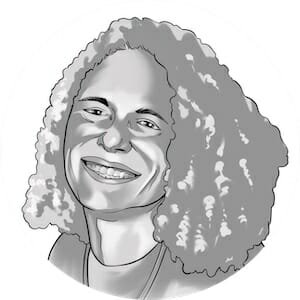
Georgia De Nolfo
Georgia’s specialty is the heliosphere, or the atmosphere around the sun. Flaring, active regions of our sun are highlighted in this image combining observations from several telescopes.
The Persistent Innovators
NASA nominated a total of eight people for us to work with, all of whom are exceptionally talented, resourceful, and who were very open to participating. At work they play different roles at different locations, but their common trait is a combination of technical brilliance and a natural instinct to push beyond boundaries and lead others. We met Georgia De Nolfo, who studies the heliosphere—the “atmosphere” of the Sun. And Kevin Antcliff, who has been designing and inventing autonomous flying cars since he was a kid. Annie Meier is solving problems around waste and recycling in space, which will help power future Moon and Mars missions, and help us with waste challenges right here on Earth.
To prepare for our workshop, we had conversations to learn about their backgrounds, as well as their motivations, frustrations, and joys of their work. We encouraged all of these innovators to bring photos of their workspaces and things they were proud of in order to help the interviewers understand who they are as individuals.
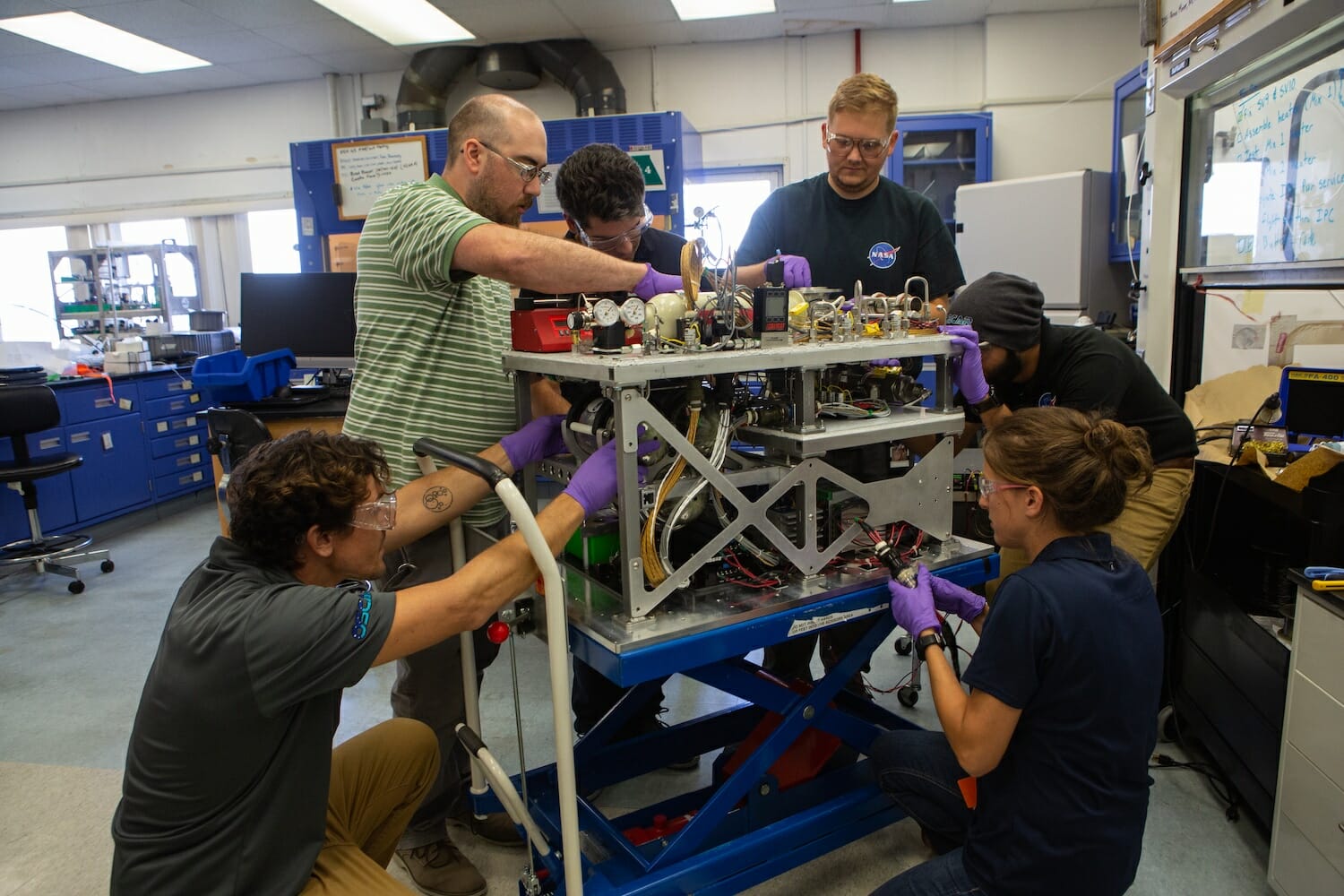
Photo by NASA/Cory Huston

Annie Meier
Members of NASA’s Orbital Syngas Commodity Augmentation Reactor, or OSCAR, team are hard at work, including Annie (pictured at far right). OSCAR studies technology to convert trash and human waste into useful gases. A prototype has been developed, and the team is in the process of constructing a new rig for a suborbital flight test.
Engaging the Innovators
The structure of the first day was to split the attendees into three groups of 25-30 people, and have those groups rotate through each of the workshops in 90-minute blocks—so we had an hour and a half with each cohort to run through Leadership Diagnostics.
We started with an introduction to design thinking, focusing on where it came from and how designers use a human-centric approach to frame and solve problems. In the short time we had available, we focused on empathy—under- standing the people you’re helping—and define/ reframe—getting to the right problem—phases. We mentioned ideation—generating a wide variety of ideas, prototyping—building a quick version of your solution, and testing—seeing if it works for real people—as future phases in the process which we wouldn’t have time for.
To lay the groundwork for the interviews, we discussed why we look for people’s stories instead of a list of facts. Stories contain more complete frameworks of value systems, assumptions, and expectations; and they’re the most powerful and memorable way to transmit information between people. We asked inter- viewers to lead with questions like, “What was your best day at NASA like?” and, “What was the most challenging situation in your role?” and then to listen actively to the answer and ask further questions to gather more detail.
Participants were divided into groups of four or five interviewers for each innovator, at separate tables. Multiple group interviews went on at the same time, and the room was buzzing with conversation. After five minutes, we asked interviewers to look at the stories they’d collect- ed and find an interesting or surprising area to probe on and get more information about.
The highlight of the workshop was watching five NASA leaders listen to one innovator. That innovator could rank from five to sixteen levels below those leaders in the organizational hierarchy. It was inspiring to see leaders learning from innovators who they likely would have never met otherwise.
An organic side effect of the workshop was that by the end of the day, the innovators had established a peer network. Having met each other for the first time at the workshop, they pooled ideas on how to continue working together to change the organization.
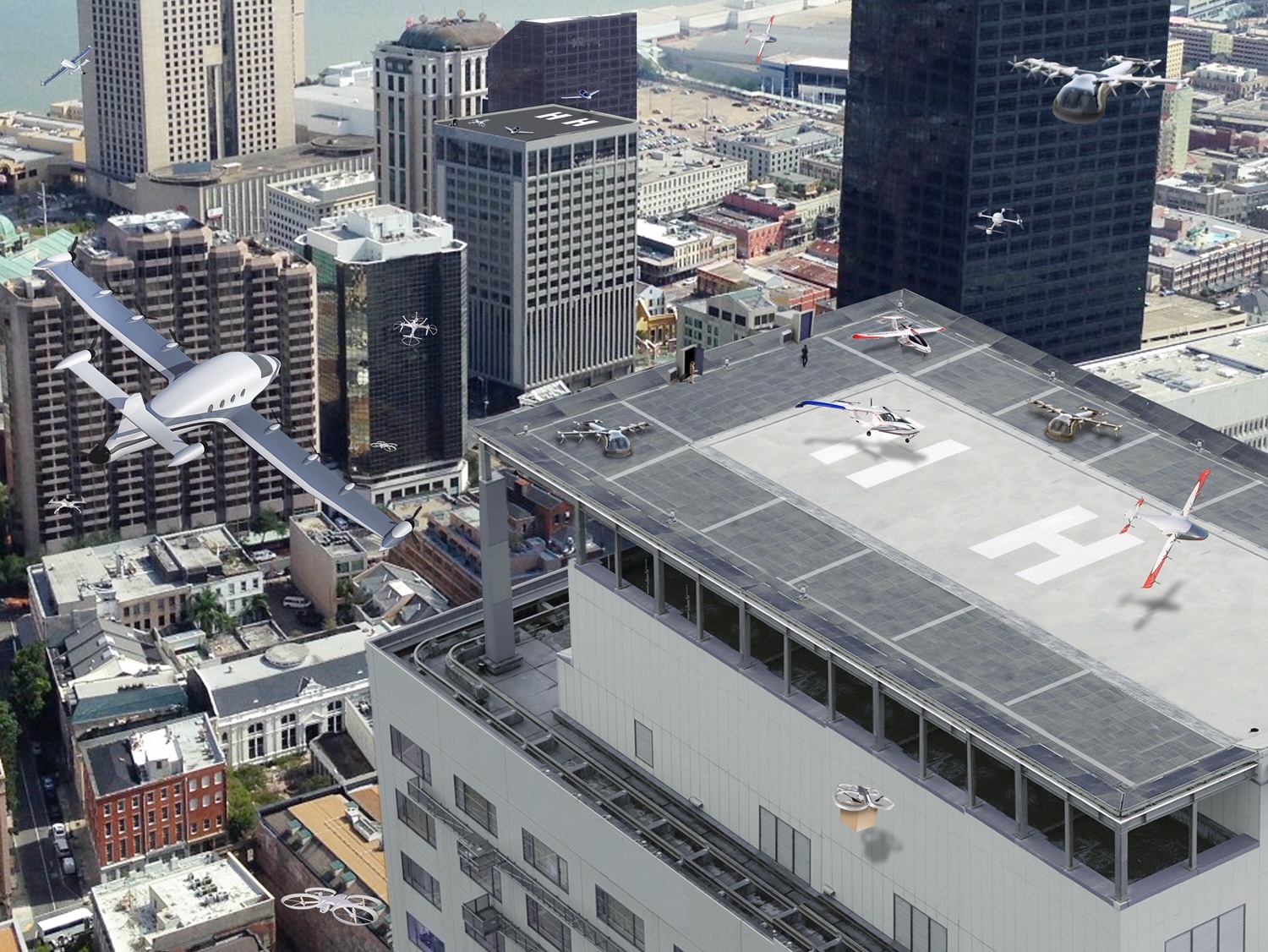
Image courtesy of NASA
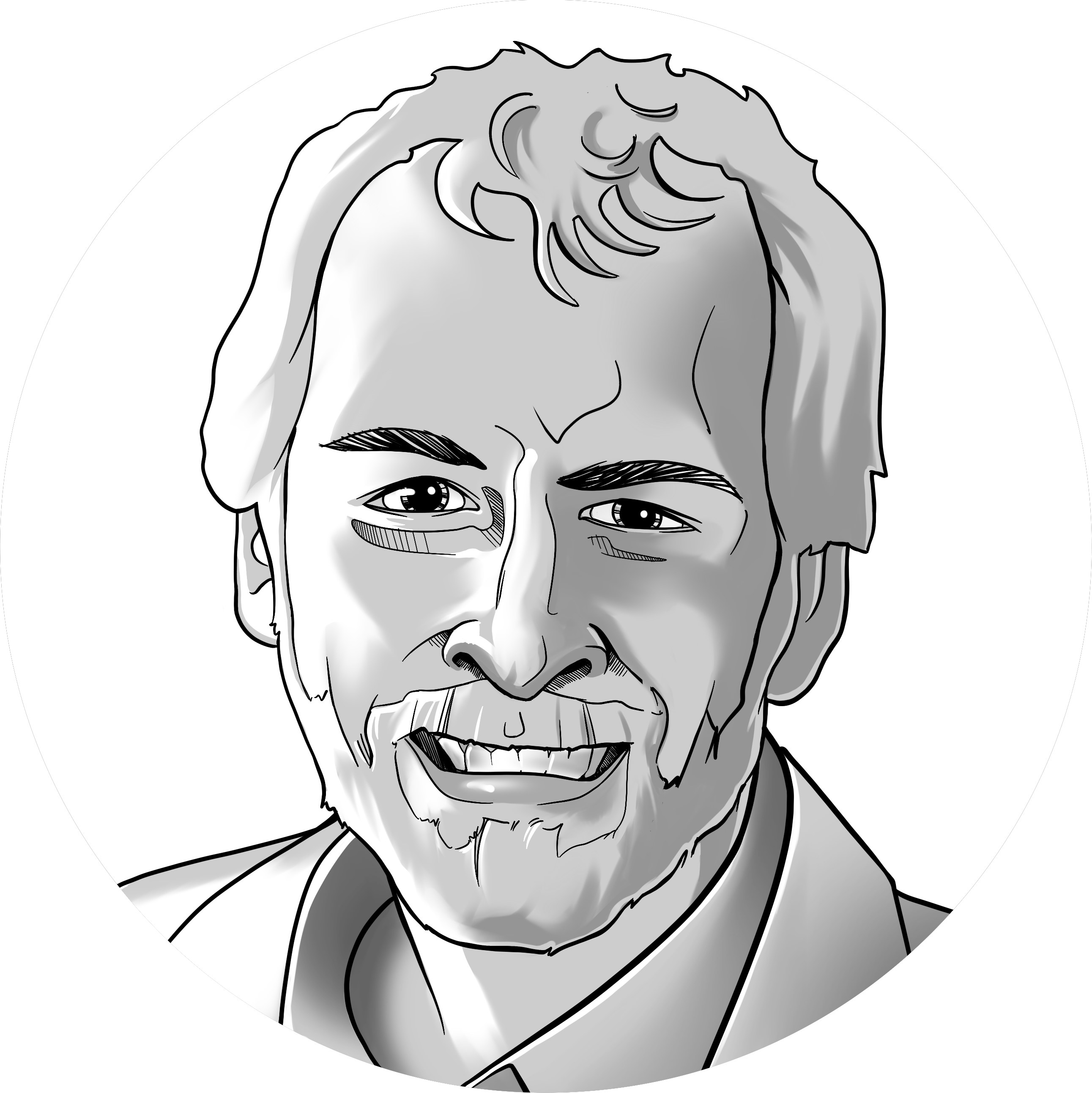
Kevin Antcliff
Urban air mobility means a safe and efficient system for vehicles, piloted or not, to move passengers and cargo within a city. Kevin’s expertise is put into practice imagining the future of transportation in the sky.
What We Learned
The workshop we ran came out of a surprisingly simple idea: talk with, and listen to, the people in your organization doing great work, and you’ll discover where things can improve for everyone. It’s much easier said than done, but it helps to have a structured workshop de- signed to elicit these conversations and capture ideas. We focused on reversing the dynamic of reporting lines, to have leaders seeking answers from people under them in the hierarchy—and to structure it in a way that was engaging, play- ful, and different from their typical work conversations or brainstorming sessions.
The scientists and engineers at NASA could easily accept higher-paying jobs in private industry, but they work at NASA because it’s NASA, and they want to contribute to the greater mission of human space exploration. The level of mission-loyalty is high, and something every organization should aspire to—but like many large organizations, the layers of management and approval are formidable obstacles. NASA projects can move so slowly that innovators can miss their window of opportunity waiting for approval, while startups and private companies solve the problem first. Actively cultivating a culture of innovation from leadership down to individual contributors is key—our advice: use design thinking, be aware, practice empathy, and listen to colleagues across the hierarchy to uncover and encourage persistent innovative behavior within the organization.

